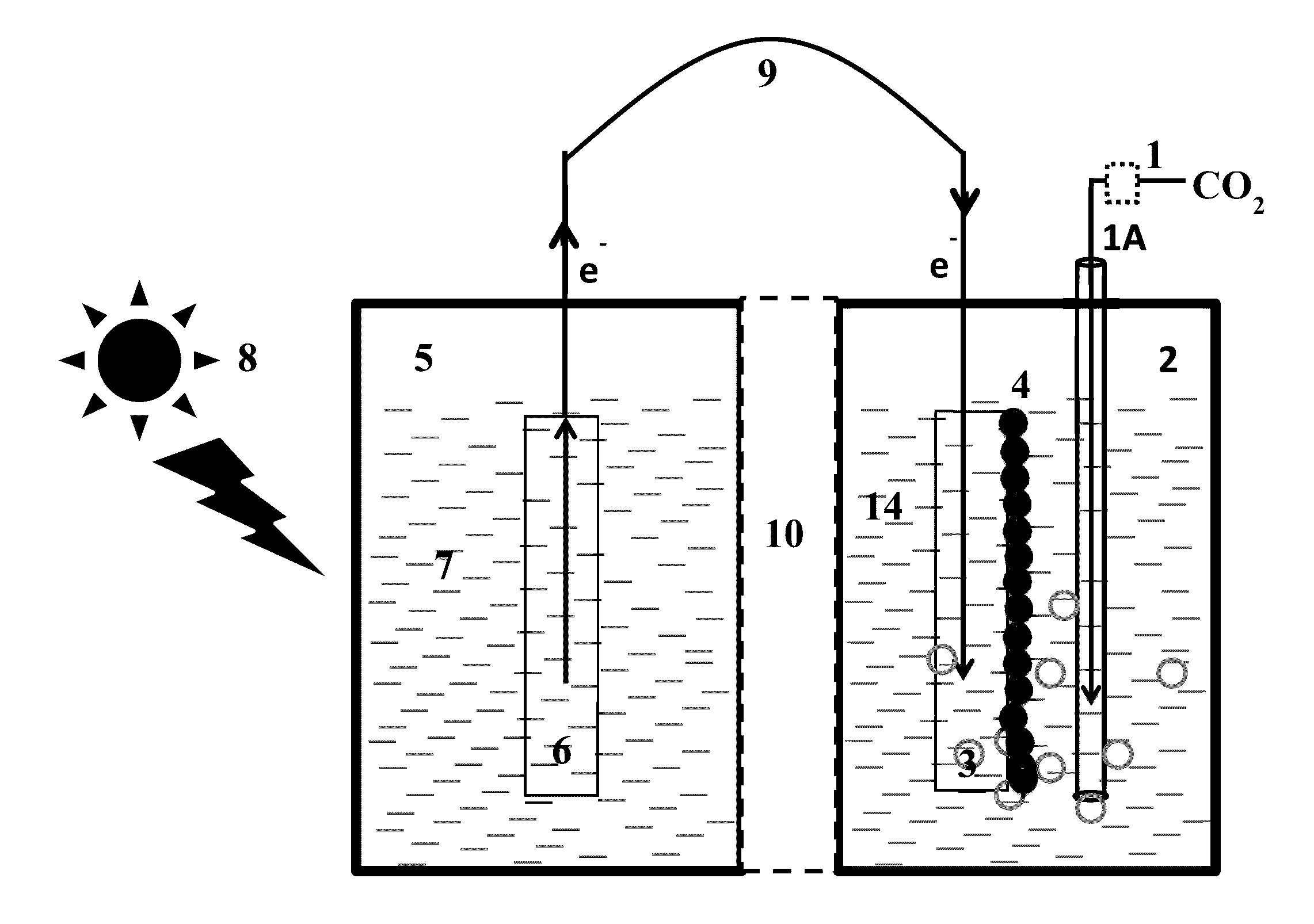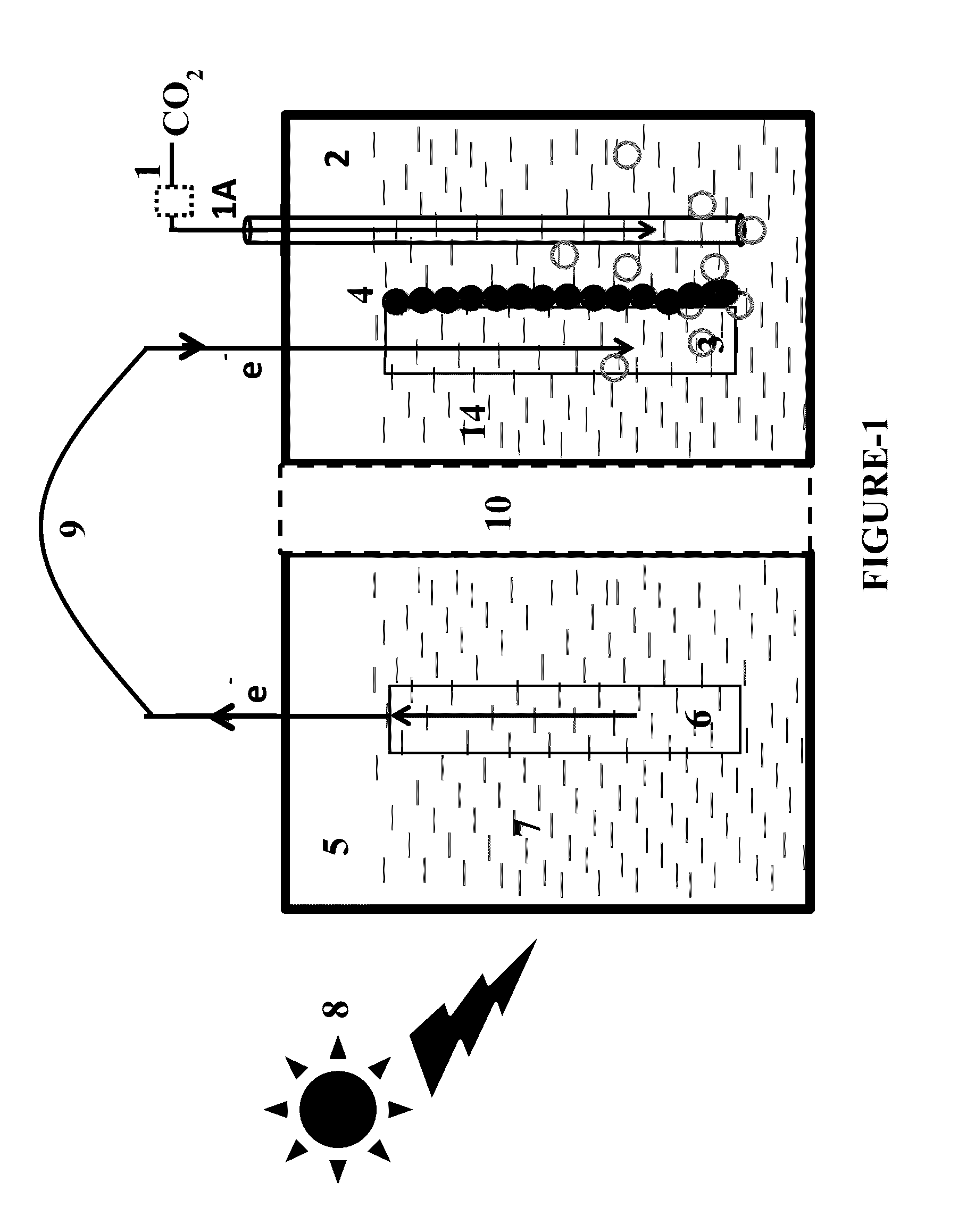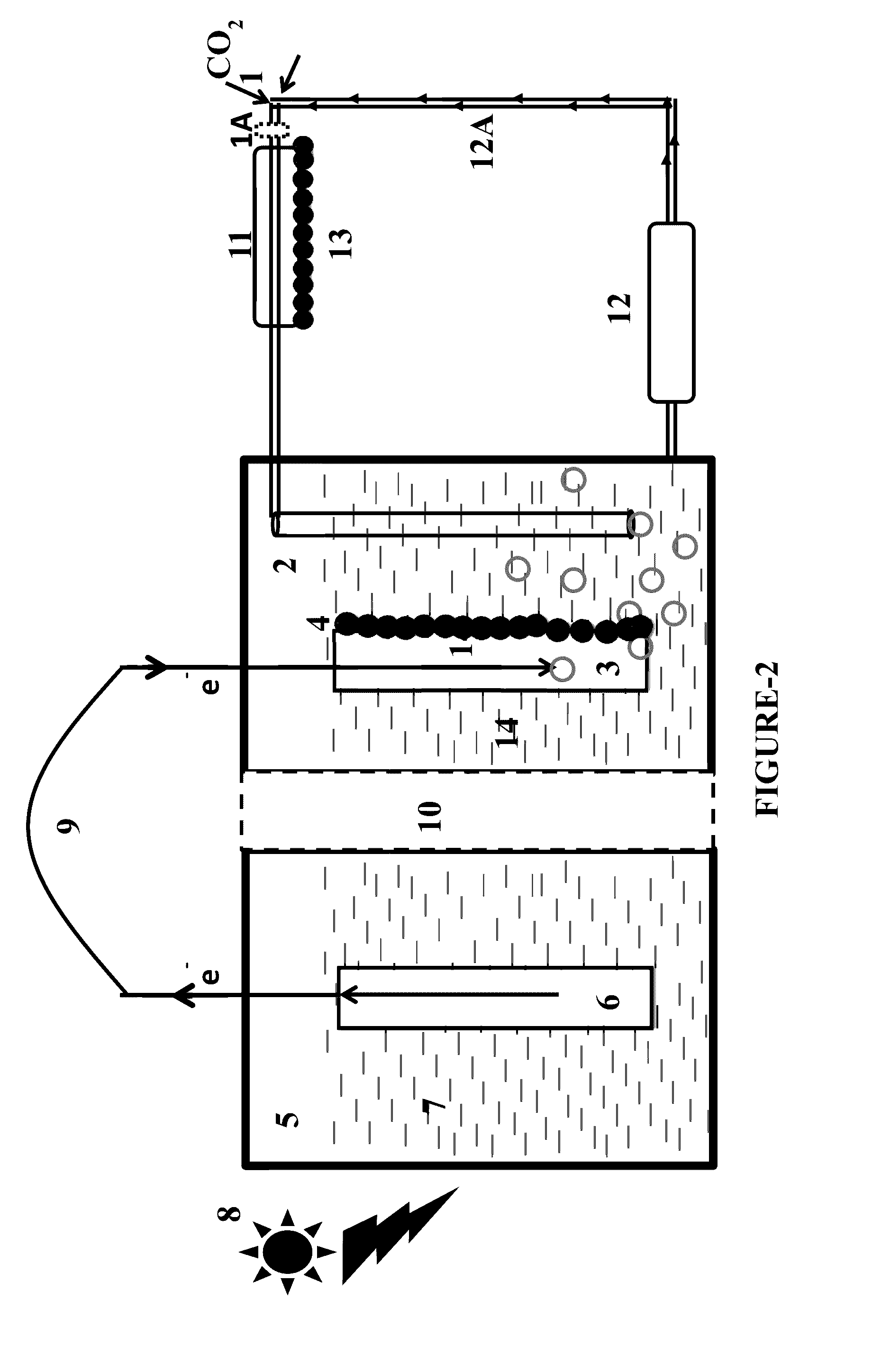Device and method for conversion of carbon dioxide to organic compounds
a technology of organic compounds and carbon dioxide, which is applied in the direction of electrolytic organic reduction, cells, electrodes, etc., can solve the problems of high toxic gas carbon monoxide and other problems, and achieve the effect of reducing the number of carbon monoxide-producing devices
- Summary
- Abstract
- Description
- Claims
- Application Information
AI Technical Summary
Benefits of technology
Problems solved by technology
Method used
Image
Examples
example 1
Formation of Biofilm of Electroactive Microbes
[0172]The electroactive microbes of the present invention consist of consortia of microbes selected from Enterobacter aerogenes MTCC 25016, Serratia sp. MTCC 25017, Shewanella sp. MTCC 25020, Alicaligens sp. MTCC 25022. The consortia of electroactive microbes have ability to reduce CO2.
[0173]To develop a biofilm of electroactive microbes the cathode chamber is inoculated by consortia of microbes selected from Enterobacter aerogenes MTCC 25016, Serratia sp. MTCC 25017, Shewanella sp. MTCC 25020, Alicaligens sp. MTCC 25022 in equal ratio (1:1) and was sparged continuously with gas mixture containing N2:CO2 in the ratio of 50:50. The cathode chamber [2] is also supplemented with additives 4-hydroxyphenethyl alcohol and Furanosyl borate ester at 2 ppm concentration which facilitates the biofilm formation. After 10 days the liquid medium from cathode chamber [2] is replaced by fresh medium aseptically. This step is repeated for 2 times at an ...
example 2
Evaluation of Consortia to Reduce Carbon Dioxide and Identification of Product
[0175]The biofilm of the selective microbes Enterobacter aerogenes MTCC 25016, Serratia sp. MTCC 25017, Shewanella sp. MTCC 25020, Alicaligens sp. MTCC 25022 grown on working electrode i.e., carbon cloth was transferred to cathode chamber of a 250 ml H type two chambered cells of glass. The cathode contained media contained (g / l) of 0.5 Na2 CO3, 2.0 NaHCO3, 2.0 KH2PO4 2.0 K2HPO4 , 0.1 MgSO4, 0.5 (NH4)2SO4, 0.5 KNO3, 2.0 ZnSO4, 0.5 NaCl and 2 ml. Trace element. The trace element solution (gram per liter) comprises Nitrilotriacetic acid (0.1), FeSO4.7H2O (0.2), MnCl2.4H2O (0.005), CoCl2.6H2O (0.02), CaCl2.2H2O (0.08), CuCl2.H2O (0.03), H3BO3 (0.02), Na2MoO4 (0.02), Na2SeO3 (0.06), NiSO4 (0.03), SnCl2 (0.03). The pH of cathode was 7.
[0176]In the anode chamber, includes a counter electrode made up of carbon steel and which includes a region form of a PO4-doped BiVO4 as semiconductor on its surface. Photoanodes...
example — 3
Example—3
[0182]The biofilm of the selective microbes Enterobacter aerogenes MTCC 25016, Serratia sp. MTCC 25017, Shewanella sp. MTCC 25020, Alicaligens sp. MTCC 25022 grown on working electrode i.e., graphite felt was transferred to cathode chamber of a 250 ml H type two chambered cells of glass. The cathode contained media contained (g / l) of 0.5 Na2 CO3, 2.0 NaHCO3, 2.0 KH2PO4 2.0 K2HPO4, 0.1 MgSO4, 0.5 (NH4)2SO4, 0.5 KNO3, 2.0 ZnSO4, 0.5 NaCl and 2 ml. Trace element. The trace element solution (gram per liter) comprises Nitrilotriacetic acid (0.1), FeSO4.7H2O (0.2), MnCl2.4H2O (−0.005), CoCl2.6H2O (0.02), CaCl2.2H2O (0.08), CuCl2.H2O (0.03), H3BO3 (0.02), Na2MoO4 (0.02), Na2SeO3 (0.06), NiSO4 (0.03), SnCl2 (0.03). The pH of cathode was 7. The electrolyte was passed through the in site product separation membrane which concentrates methanol and it was passed through the CO2 solubilizing or solubility improving column along with CO2 which was continuously sparged at 20 ml / min rate. ...
PUM
 Login to View More
Login to View More Abstract
Description
Claims
Application Information
 Login to View More
Login to View More - R&D
- Intellectual Property
- Life Sciences
- Materials
- Tech Scout
- Unparalleled Data Quality
- Higher Quality Content
- 60% Fewer Hallucinations
Browse by: Latest US Patents, China's latest patents, Technical Efficacy Thesaurus, Application Domain, Technology Topic, Popular Technical Reports.
© 2025 PatSnap. All rights reserved.Legal|Privacy policy|Modern Slavery Act Transparency Statement|Sitemap|About US| Contact US: help@patsnap.com



